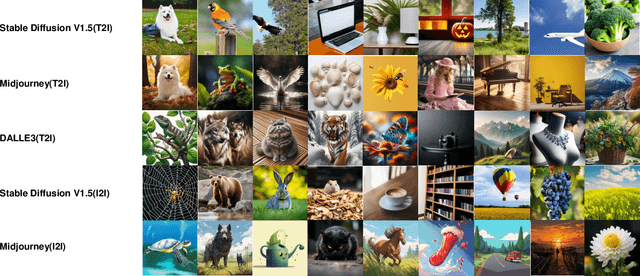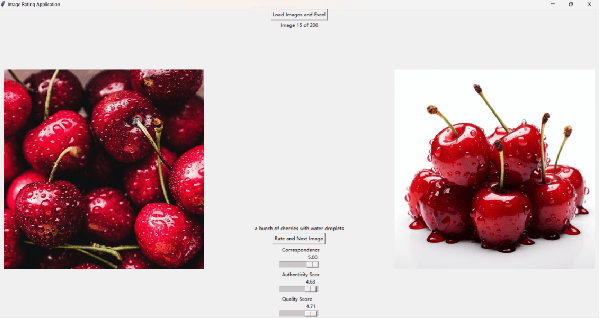Jihe Li
Joint Point Cloud Upsampling and Cleaning with Octree-based CNNs
Oct 22, 2024Abstract:Recovering dense and uniformly distributed point clouds from sparse or noisy data remains a significant challenge. Recently, great progress has been made on these tasks, but usually at the cost of increasingly intricate modules or complicated network architectures, leading to long inference time and huge resource consumption. Instead, we embrace simplicity and present a simple yet efficient method for jointly upsampling and cleaning point clouds. Our method leverages an off-the-shelf octree-based 3D U-Net (OUNet) with minor modifications, enabling the upsampling and cleaning tasks within a single network. Our network directly processes each input point cloud as a whole instead of processing each point cloud patch as in previous works, which significantly eases the implementation and brings at least 47 times faster inference. Extensive experiments demonstrate that our method achieves state-of-the-art performances under huge efficiency advantages on a series of benchmarks. We expect our method to serve simple baselines and inspire researchers to rethink the method design on point cloud upsampling and cleaning.
Gaussian Representation for Deformable Image Registration
Jun 05, 2024



Abstract:Deformable image registration (DIR) is a fundamental task in radiotherapy, with existing methods often struggling to balance computational efficiency, registration accuracy, and speed effectively. We introduce a novel DIR approach employing parametric 3D Gaussian control points achieving a better tradeoff. It provides an explicit and flexible representation for spatial deformation fields between 3D volumetric medical images, producing a displacement vector field (DVF) across all volumetric positions. The movement of individual voxels is derived using linear blend skinning (LBS) through localized interpolation of transformations associated with neighboring Gaussians. This interpolation strategy not only simplifies the determination of voxel motions but also acts as an effective regularization technique. Our approach incorporates a unified optimization process through backpropagation, enabling iterative learning of both the parameters of the 3D Gaussians and their transformations. Additionally, the density of Gaussians is adjusted adaptively during the learning phase to accommodate varying degrees of motion complexity. We validated our approach on the 4D-CT lung DIR-Lab and cardiac ACDC datasets, achieving an average target registration error (TRE) of 1.06 mm within a much-improved processing time of 2.43 seconds for the DIR-Lab dataset over existing methods, demonstrating significant advancements in both accuracy and efficiency.
PKU-AIGIQA-4K: A Perceptual Quality Assessment Database for Both Text-to-Image and Image-to-Image AI-Generated Images
Apr 29, 2024



Abstract:In recent years, image generation technology has rapidly advanced, resulting in the creation of a vast array of AI-generated images (AIGIs). However, the quality of these AIGIs is highly inconsistent, with low-quality AIGIs severely impairing the visual experience of users. Due to the widespread application of AIGIs, the AI-generated image quality assessment (AIGIQA), aimed at evaluating the quality of AIGIs from the perspective of human perception, has garnered increasing interest among scholars. Nonetheless, current research has not yet fully explored this field. We have observed that existing databases are limited to images generated from single scenario settings. Databases such as AGIQA-1K, AGIQA-3K, and AIGCIQA2023, for example, only include images generated by text-to-image generative models. This oversight highlights a critical gap in the current research landscape, underscoring the need for dedicated databases catering to image-to-image scenarios, as well as more comprehensive databases that encompass a broader range of AI-generated image scenarios. Addressing these issues, we have established a large scale perceptual quality assessment database for both text-to-image and image-to-image AIGIs, named PKU-AIGIQA-4K. We then conduct a well-organized subjective experiment to collect quality labels for AIGIs and perform a comprehensive analysis of the PKU-AIGIQA-4K database. Regarding the use of image prompts during the training process, we propose three image quality assessment (IQA) methods based on pre-trained models that include a no-reference method NR-AIGCIQA, a full-reference method FR-AIGCIQA, and a partial-reference method PR-AIGCIQA. Finally, leveraging the PKU-AIGIQA-4K database, we conduct extensive benchmark experiments and compare the performance of the proposed methods and the current IQA methods.
 Add to Chrome
Add to Chrome Add to Firefox
Add to Firefox Add to Edge
Add to Edge